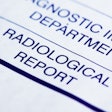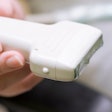A short emergency radiology elective increases second-year medical students' understanding of appropriate imaging use and the effects of radiation exposure -- as well as their confidence in ordering imaging appropriately, according to a study published in the September issue of Academic Radiology.
Researchers from the University of Michigan Hospital System introduced second-year medical students to the American College of Radiology (ACR) Appropriateness Criteria in an interactive, case-based elective to illustrate use of the criteria for common emergency department complaints (Acad Radiol, September 2013, Vol. 20:9, pp. 1168-1176).
"With health care reform looming and the certainty of finite resources, it is more crucial than ever that future physicians are educated regarding appropriate imaging utilization and evidence-based imaging, not only to relieve stress on an overburdened health care system but also, most importantly, to provide optimal patient care and minimize risk," wrote lead author Dr. Jessica Leschied and colleagues.
Twenty-four students participated in a three-day elective covering the ACR criteria, comparative effective imaging, and risks associated with radiation exposure. The researchers assessed the students' knowledge of the criteria using case-based, multiple-choice questions, and the students' perceived confidence in using the criteria was assessed on a five-point scale. Leschied's group then compared the results for these students with a group of second-year students who took a different radiology elective during the same time period.
Before participating in the emergency radiology elective, 21 students of the 24 had never heard of the ACR's appropriateness criteria; the group of 24 students answered an average of 3.45 questions correctly out of eight (43.1%). After they completed the course, however, the students answered an average of 5.3 questions correctly (66.3%). In the comparison group, 12 students first answered an average of 3.08 questions correctly, followed by 3.09 correct answers.
Students' confidence in ordering appropriate imaging improved nearly twofold after completing the elective course, from a range of 1.9 to 3.2 to a range of 3.7 to 4.5 on the five-point scale.
As for how to improve the course in the future, many students stated that they would appreciate more basic radiology teaching, including radiology-anatomy correlations and the utility of various imaging modalities, the team wrote.
The short elective definitely had a positive result, according to Leschied's group.
"[After the course], second-year medical students improved their knowledge of appropriate image utilization and perceived awareness of the indications, contraindications, and effects of radiation exposure related to medical imaging," they wrote.




















